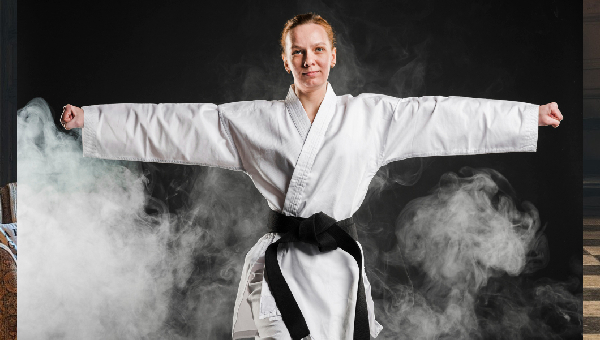Beyond the Black Belt: The True Ups and Downs of Karate Classes

Karate one of the ancient martial arts of Okinawa Japan, is famous not only for physical training but virtue training. Thus, although the path towards the black belt is considered a major achievement, practicing karate includes more Joy and Sorrow that occur when being a part of the classes and develops a person’s life both inside and outside the dojo. This article explains the real ups and downs of the karate classes, and their effect showing a lifelong impact on a student.
The Upside of Karate Classes
As will be seen the advantages of karate classes encompass weight loss, improved physical and mental focus, and the development of self-confidence.
Fitness and Health Benefits of Physical Activities
Among the principles that can be highlighted as the essentially positive outcomes of the classes, it would be correct to mention that enhanced physical fitness is one of the first. Karate exercise incorporates all the major body parts and leads to the building of strength, flexibility, balance, and increases in the cardiovascular systems. These skills help the students develop their muscles mirroring or even surpassing the normal does, increasing their endurance besides having a healthy body weight.
Mental Discipline and Focus
Karate is indeed a science, meaning, that besides being physical it is equally mental. The practice is very mentally challenging and steadiness of the mind is imperative. With meditation, students can train their minds to zero in on one thing, regulating feelings and emotions, and having sharper senses. This mental training is not confined to the hall and it assists people in increasing concentration in other aspects such as studying and working.
Confidence and Self-Esteem
Legal skills are progressively acquired by students as they advance in their studies and as they learn new activities, self-esteem is bound to rise. Success in karate where one can overcome some of the challenges faced in their everyday life makes them feel wanted hence enhancing their self-esteem. It tends to spill over into other spheres and grants people more courage and composure in facing challenges.
Self-Defense Skills
Karate classes make sure that the students are fully furnished with practical means of defense that may be so useful at one time or the other. Knowing how to defend oneself makes one feel more confident and you also feel safe. Self-defence is a capacity that rouses both protection and responsibility in an individual and to other people too.
Sense of Community
This point is usually cultivated among karate dojos and may make students feel that they are members of a consolidated group. Training, practice sessions, achievements of different goals, and city practices make members aware of each other and become friends. Thus, the feeling that you are not alone, and people around you are ready to help, is an advantage for the training process as well as for motivation.
Physical Injuries and Strain
Like other forms of martial arts, karate emphasizes fitness; nevertheless, this practice comes with limitations, mainly being prone to receiving injuries. Children may get sprains, strains, or bruises and in severe cases, one may get a fracture or concussion. Such are the physical aspects of Karate which in some cases causes one to be over-trained, develop pains in their bodies or even tired up until they quit. However, these risks are evident hence need the students to listen to their bodies, practice the right technique and ensure safety always.
Mental and Emotional Challenges
The mental demand applicable to karate has two sides to it; it is both a strength and a weakness. Although it helps in achieving concentration and also being persistent, it could be stressful both physically and psychologically. There is pressure and potential dissatisfaction with progress, frustration, and anxiety as the student tries to get the right and advance. There may be times when expectations are put on an individual in a way that creates pressure and in the process one may feel like giving up.
Time Commitment and Sacrifice
Similar to other martial arts, karate classes require a large commitment of one’s time. Practicing the sport, going to classes, and playing tournaments or demonstrations are not a walk in the park and entail sacrifices. By practicing a few hours in the evening or before going to work or school or when they are free from their responsibilities like work or school or taking care of the family. There is an emphasis on time management and all-around commitment for an athlete if he or she is also a student.
Financial Costs
However, one disadvantage that is linked to karate classes is the costs. School fees, school uniforms, equipment, examination fees, and travel costs for the competitions also accumulate over the years. Although karate practice might be exciting it can cost a lot of money to go through the training thus becoming a financial strain to the students or parents.
Plateaus and Setbacks
Improvement in karate does not necessarily mean that the succeeding days will be a repetition of the previous one. An unfortunate part, that usually arises, is the breakdown of progress where learners feel frustrated and discouraged because they feel they have to groove to the next level but fail to do so. One of the ways through which motivation may be lost is as follows Disappointments like when you fail to pass a belt test or when you are overwhelmed by a particular move. Students need to endure all these challenges and be able to persevere if they have to continue the journey with the right attitude which is a growth mindset.
Finding Balance and Growth
Nevertheless, the fluctuations in the process of developing the Karate classes are significant as the journey through this undertaking is also the path to personal enlightenment.
Following are the tips for navigating the highs and lows:
Embrace the Journey
Karate is an art of self-defense as well as a discipline of mind and body it is a process and not an end product. Treat each movement as positive or negative as just a chance to learn something new and use that knowledge in the future. Encouragement of performance should be done no matter how insignificant it may be and problems should be perceived as opportunities to build up character.
Prioritize Self-Care
However, physical and psychological health is often the most perquisite in karate for the long-term goals. One should pay attention to the signals of the body, take a break if one is tired and take care of oneself. Maintaining proper nutrition and sleep also complements the training management and should be adopted in the process.
Set Realistic Goals
Thus, great specific goals for your karate path should be set and ought to be quite realistic. It is advisable to decompose informational objectives into smaller sub-tasks that can easily be accomplished. This way there is encouragement on top of increasing motivation and this also gives a sense of achievement as you ascend the steps.
Maintain a Growth Mindset
Set up a growth-oriented attitude that assumes that challenges are installments for reception and failures are learning experiences. Be willing to learn, willing to wait, and willing to be changed.
Conclusion
This path through karate classes is rich in real-life experience, which influences a martial artist and his or her approach to life as well as his or her karate skills. It is important because while the journey could be difficult, the benefits that martial arts give such as being fit, disciplined mind and body,/being assertive, able to protect oneself, and belonging to a group make for the right reason. Thus, learning to accept the process, caring for one’s well-being, asking for help, having achievable objectives, and staying open-minded will help students face the genuine highs and lows of karate and benefit from a concept of martial art not present in academia.








